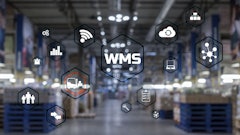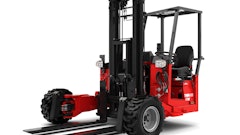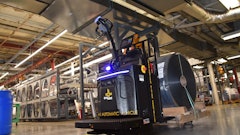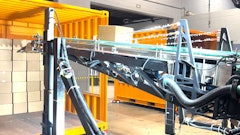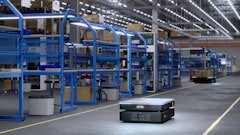
Nearly 58% of warehouse decision-makers plan to deploy radio frequency identification (RFID) technology by 2028, which will help increase inventory visibility and reduce out-of-stocks, according to new research by Zebra Technologies Corp.
“The significant growth of returns aligns with explosive e-fulfillment growth over the last several years, and it is a mandate for change across every part of the supply chain,” says Andre Luecht, global warehouse and supply chain strategy lead, Zebra Technologies. “This means warehouse leaders must modernize their operations with technology solutions to handle returns and increase agility, inventory visibility and demand forecasting in order to improve efficiency and make better decisions in real time.”
Key takeaways:
- Over the next five years, a majority of warehouse decision-makers plan to deploy fixed, passive or handheld RFID readers and fixed industrial scanning solutions that can better track assets, workers and goods throughout the warehouse environment.
- 73% of warehouse decision-makers have or will be accelerating timelines of modernization projects.
- A majority of warehouse decision-makers (76%) say they are under pressure to improve performance while adjusting to shifting consumer ecommerce demands. Inaccurate inventory and out-of-stocks continue to significantly challenge productivity, according to nearly 80% of warehouse associates and decision-makers. In fact, both groups—82% of associates and 76% of decision-makers—acknowledge they need better inventory management tools to achieve better accuracy and determine availability. And 91% of decision-makers are addressing this need, citing plans to invest in technology to increase visibility across the supply chain by 2028.
- 69% of warehouse decision-makers already have or are planning to automate workflows by 2024 to support warehouse associates and shift them toward more customer-centric, high-value tasks. Over half of warehouse decision-makers believe automation increases worker efficiency and productivity by reducing manual picking, order errors and cycle time. Meanwhile, eight in 10 warehouse associates agree using more technology and automation helps them meet or exceed productivity goals.
- 88% of warehouse decision-makers say adding warehouse technologies, including devices and robotics, attract and retain employees. More than half of the surveyed decision-makers plan to implement machine learning (52%) and predictive analytics (59%) software solutions in their facilities by 2028.
- 77% of warehouse decision-makers are focused on reducing emissions and waste while eight in 10 warehouse decision-makers say it’s important their warehouse technology solutions maximize battery life.








